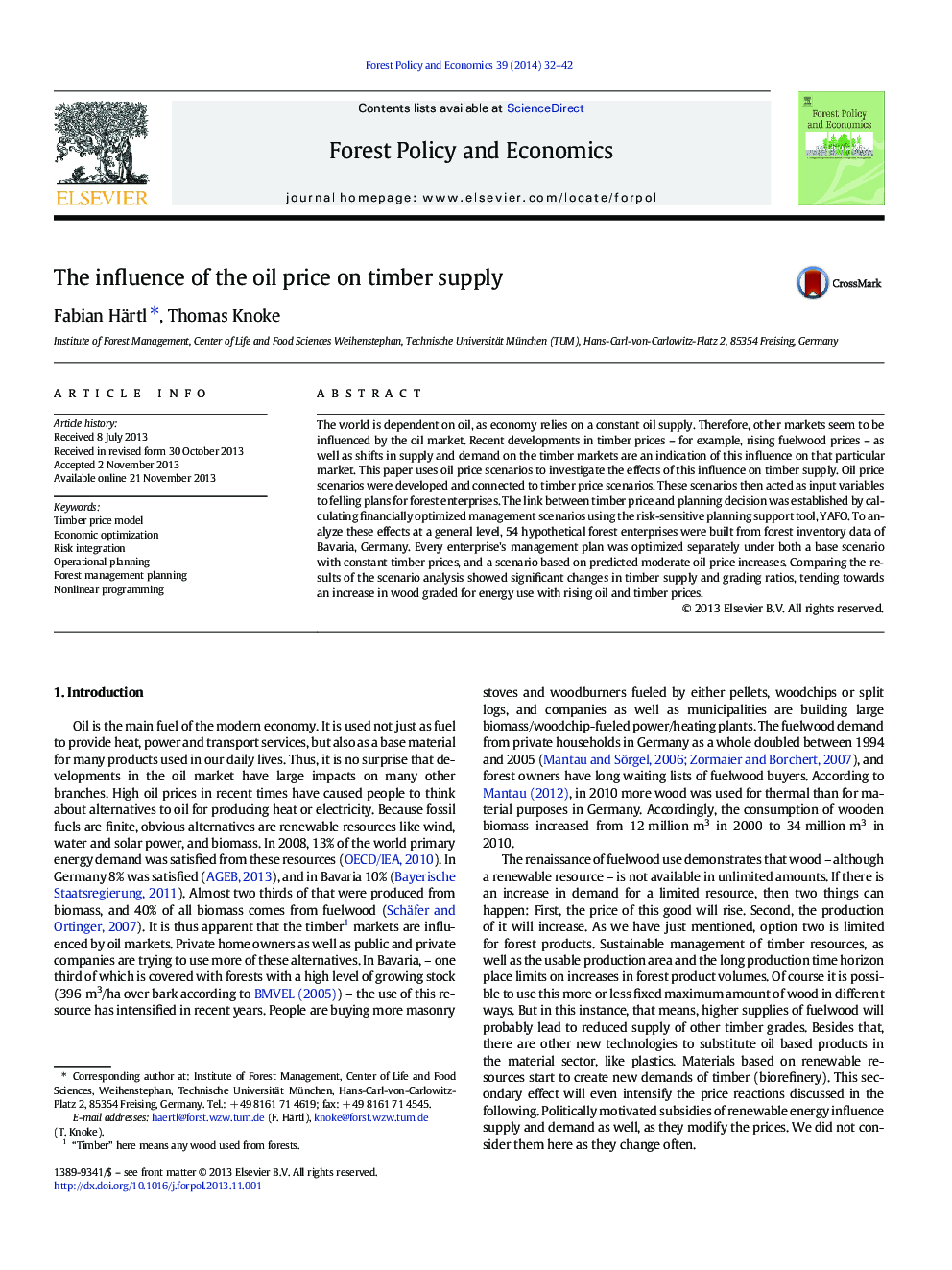| Article ID | Journal | Published Year | Pages | File Type |
|---|---|---|---|---|
| 91932 | Forest Policy and Economics | 2014 | 11 Pages |
•Energy wood prices are influenced by oil prices.•Pulpwood and sawlog prices react to energy wood prices.•Financially optimized planning scenarios by nonlinear programming techniques•Short-term timber supply is reduced with continuously increasing prices.•Rising timber prices increase timber supply for energetic use.
The world is dependent on oil, as economy relies on a constant oil supply. Therefore, other markets seem to be influenced by the oil market. Recent developments in timber prices – for example, rising fuelwood prices – as well as shifts in supply and demand on the timber markets are an indication of this influence on that particular market. This paper uses oil price scenarios to investigate the effects of this influence on timber supply. Oil price scenarios were developed and connected to timber price scenarios. These scenarios then acted as input variables to felling plans for forest enterprises. The link between timber price and planning decision was established by calculating financially optimized management scenarios using the risk-sensitive planning support tool, YAFO. To analyze these effects at a general level, 54 hypothetical forest enterprises were built from forest inventory data of Bavaria, Germany. Every enterprise's management plan was optimized separately under both a base scenario with constant timber prices, and a scenario based on predicted moderate oil price increases. Comparing the results of the scenario analysis showed significant changes in timber supply and grading ratios, tending towards an increase in wood graded for energy use with rising oil and timber prices.
